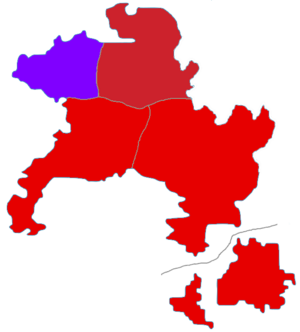Akashian general election, 1972
| |||||||||||||||||||||||||||||||||||||||||||||||||||||||||||||||||||||||||||||||||||||
200 seats in the National Assembly 101 seats needed for a majority | |||||||||||||||||||||||||||||||||||||||||||||||||||||||||||||||||||||||||||||||||||||
|---|---|---|---|---|---|---|---|---|---|---|---|---|---|---|---|---|---|---|---|---|---|---|---|---|---|---|---|---|---|---|---|---|---|---|---|---|---|---|---|---|---|---|---|---|---|---|---|---|---|---|---|---|---|---|---|---|---|---|---|---|---|---|---|---|---|---|---|---|---|---|---|---|---|---|---|---|---|---|---|---|---|---|---|---|---|
| Turnout | 89,2% | ||||||||||||||||||||||||||||||||||||||||||||||||||||||||||||||||||||||||||||||||||||
| |||||||||||||||||||||||||||||||||||||||||||||||||||||||||||||||||||||||||||||||||||||
 Most voted party by province | |||||||||||||||||||||||||||||||||||||||||||||||||||||||||||||||||||||||||||||||||||||
| |||||||||||||||||||||||||||||||||||||||||||||||||||||||||||||||||||||||||||||||||||||
A general election was held in Akashi on 29 April 1972. This was a snap election caused by the Masaki Ōshiro government losing a budget vote. According to the Constitution, the new National Assembly was only elected to complete the term of its predecessor.
This was dubbed the "election of vultures" (Miranian: ハゲタカの選挙 Hagetaka no senkyo) due to the dramatic collapse of the National Union, which went from being the largest party in the legislature to a minor party with a loss of 84 seats. Asahi Shinbun famously published an editorial cartoon the day after the election showing the other party leaders as vultures eating the carrion of the deceased NU.
The collapse of the NU brought about a political realignment, which included the consolidation of party blocs. The Akashian left was now ascendant: the Socialist Party and Communist Party became the largest parties in the legislature.
Results
| General election, 29 April 1972 | |||||||||
|---|---|---|---|---|---|---|---|---|---|

| |||||||||
| Party | Party list | Constituency | Total seats |
+/- | |||||
| PR | % | +/− | STV | % | +/− | ||||
| Socialist Party | 1.126.301 | 22,5% | +10,5% | 1.383.493 | 27,7% | +16,2% | 40 | +18 | |
| National Cooperative Party | 590.682 | 11,8% | +1,8% | 499.456 | 10,0% | +1,0% | 25 | +5 | |
| Communist Party | 520.601 | 10,4% | +4,3% | 789.140 | 15,8% | +11,8% | 26 | +17 | |
| Liberal Party | 435.503 | 8,4% | +1,4% | 419.543 | 8,4% | +3,7% | 24 | +14 | |
| Agrarian Party | 365.422 | 7,3% | +0,9% | 424.538 | 8,5% | +3,0% | 20 | +10 | |
| National Union | 350.405 | 7,0% | -21,5% | 449.510 | 9,0% | -41,5% | 17 | -84 | |
| National Democratic Party | 325.376 | 6,5% | +0,3% | 164.820 | 3,3% | -0,9% | 11 | +2 | |
| Reform Party | 310.359 | 6,2% | +0,2% | 159.826 | 3,2% | +0,4% | 10 | +2 | |
| United Akashi | 290.335 | 5,8% | ±0,0% | 154.831 | 3,1% | +0,6% | 10 | +3 | |
| Social Credit Party | 200.231 | 4,0% | +1,0% | 84.908 | 1,7% | +0,5% | 4 | +1 | |
| Conservative National Party | 175.202 | 3,5% | ±0,0% | 109.880 | 2,2% | +0,8% | 3 | ±0 | |
| Akashi Renewal Party | 105.121 | 2,1% | -0,6% | 54.940 | 1,1% | +0,1% | 2 | ±0 | |
| Freedom League–Tax Cuts Party | 110.127 | 2,2% | -0,3% | 49.946 | 1,0% | +0,2% | 2 | +1 | |
| Independents | 100.116 | 2,0% | +1,0% | 249.728 | 5,0% | +4,1% | 6 | +5 | |
| Total | 5.005.783 | 100% | — | 4.994.559 | 100% | — | 200 | — | |
| Registered voters and turnout | 5.611.864 | 89,2% | — | 5.611.864 | 89,0% | ||||
| Bloc strength | ||
|---|---|---|
| Bloc | Parties | Seats |
| Crimson bloc | CP, SCP | 30 |
| Pale crimson bloc | SP, NU | 57 |
| Light yellow bloc | NCP, AP | 45 |
| Light blue bloc | LP, NDP, RP, UA | 55 |
| Dark blue bloc | CNP, ARP, FL, TCP | 7 |
- Government: Socialist Party–National Cooperative Party–National Union–Agrarian Party coalition.
The SP won a plurality, although of only 40 seats, to the disappointment of party leader Tarō Yukimura. The CP and NCP finished only one seat apart due to their different performances in the party list and constituency vote.
The NU's collapse to 6th place and only 17 seats represents one of the worst defeats for a governing party in Eracura; it would later be surpassed by the Conservative National Party's complete wipeout in 1990.
On the right, the new Tax Cuts Party's hopes of achieving a breakthrough in a unity list with the Freedom League were dashed: the unity list obtained swings of less than 1% and only one extra seat.
The parliamentary mathematics made a left-wing government inevitable. The crimson and pale crimson blocs together had 87 seats, and had already begun cooperating. The light blue bloc had only one possible path to power: forming a coalition with the light yellow bloc, but it would've required independents' support to stay in office. This was a non-starter, as finance minister Naoko Nemoto had no wish to align with the right.
Tarō formed a pale crimson–light yellow coalition, with a small majority of 102 seats, and relying on outside crimson support.




